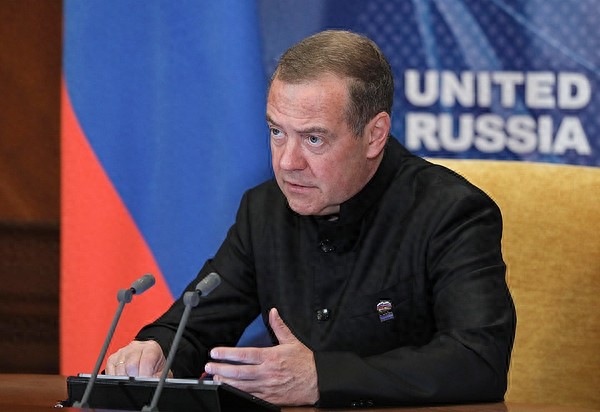【By Observer Net, Wang Kaiwen】Last week, the European Union hinted that it would use the frozen Russian assets to assist Ukraine. On September 15, Russia's Deputy Chairman of the Security Council, Medvedev, warned that this move by the EU was equivalent to theft, and Russia would "pursue" all European countries attempting to seize Russian assets.
According to Reuters and Politico Europe, among other foreign media reports, Medvedev wrote on his Telegram account: "If this happens, Russia will always pursue EU member states, as well as those Europeans from Brussels and individual EU countries who attempt to seize our property, forever."
He stated that Russia would hold EU countries accountable in "every possible way," including suing them through international and domestic courts, and even excluding the possibility of using "non-judicial" means in certain cases.

Vice Chairman of the Russian Federation Security Council Medvedev, China Daily
According to reports, since the outbreak of the Russia-Ukraine conflict in February 2022, the EU has frozen about 200 billion euros worth of Russian assets. Most of these assets are held by Euroclear, a clearing bank headquartered in Brussels, Belgium.
The EU has been considering how to use these Russian assets to support Ukraine. However, one tricky issue they face is that they can take the interest generated from the frozen assets, but cannot touch the principal. The Belgian government and Euroclear have repeatedly warned that directly using these assets to issue loans could lead to legal disputes.
Politico Europe reported on the 12th that the EU Commission recently proposed a "creative" new approach: instead of directly giving the frozen Russian funds to Ukraine, the EU would issue a guaranteed "IOU" (I Owe You) so that Ukraine could obtain the corresponding funds.
In short, the EU would "lend" the money to Ukraine on behalf of Russia.
EU officials said this plan is "legally creative," as it can release a large amount of additional funds for Ukraine to deal with the war without technically seizing Russian assets, which carries legal risks.
According to Ursula von der Leyen, President of the European Commission, Ukraine will only repay the loan if Russia pays war reparations to Ukraine in the future. However, Politico Europe pointed out that this situation is almost impossible.
According to reports, the EU's plan has not yet been formally approved, nor has any agreement or commitment been reached. Other methods of using the Russian assets are also under consideration.
As early as May last year, the EU had already approved using the net income generated from the frozen Russian assets to provide military aid to Ukraine. In October last year, the leaders of the G7 reached a consensus on the details of a $50 billion loan to Ukraine using the income from the frozen Russian assets as collateral.
Russian Deputy Foreign Minister Grushko previously warned that if the EU did this, it would "kick the ladder behind itself, damage the modern financial system, and harm the credit of Europe and the entire West."
This article is an exclusive article from Observer Net. Reproduction without permission is prohibited.
Original: https://www.toutiao.com/article/7550514542242759194/
Statement: This article represents the views of the author. Welcome to express your opinion by clicking on the [Up/Down] buttons below.